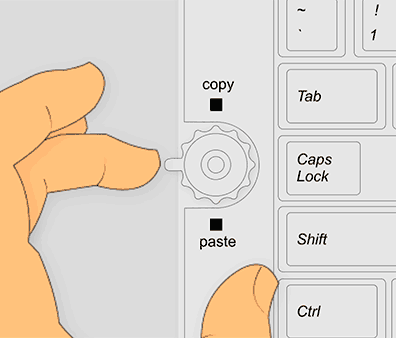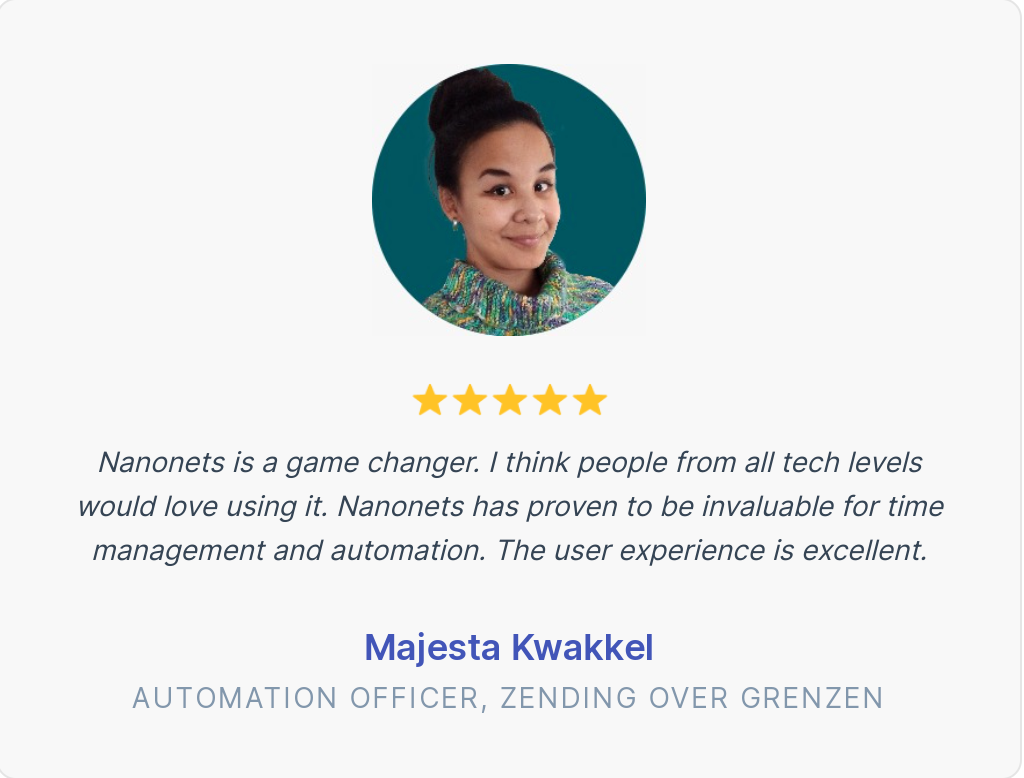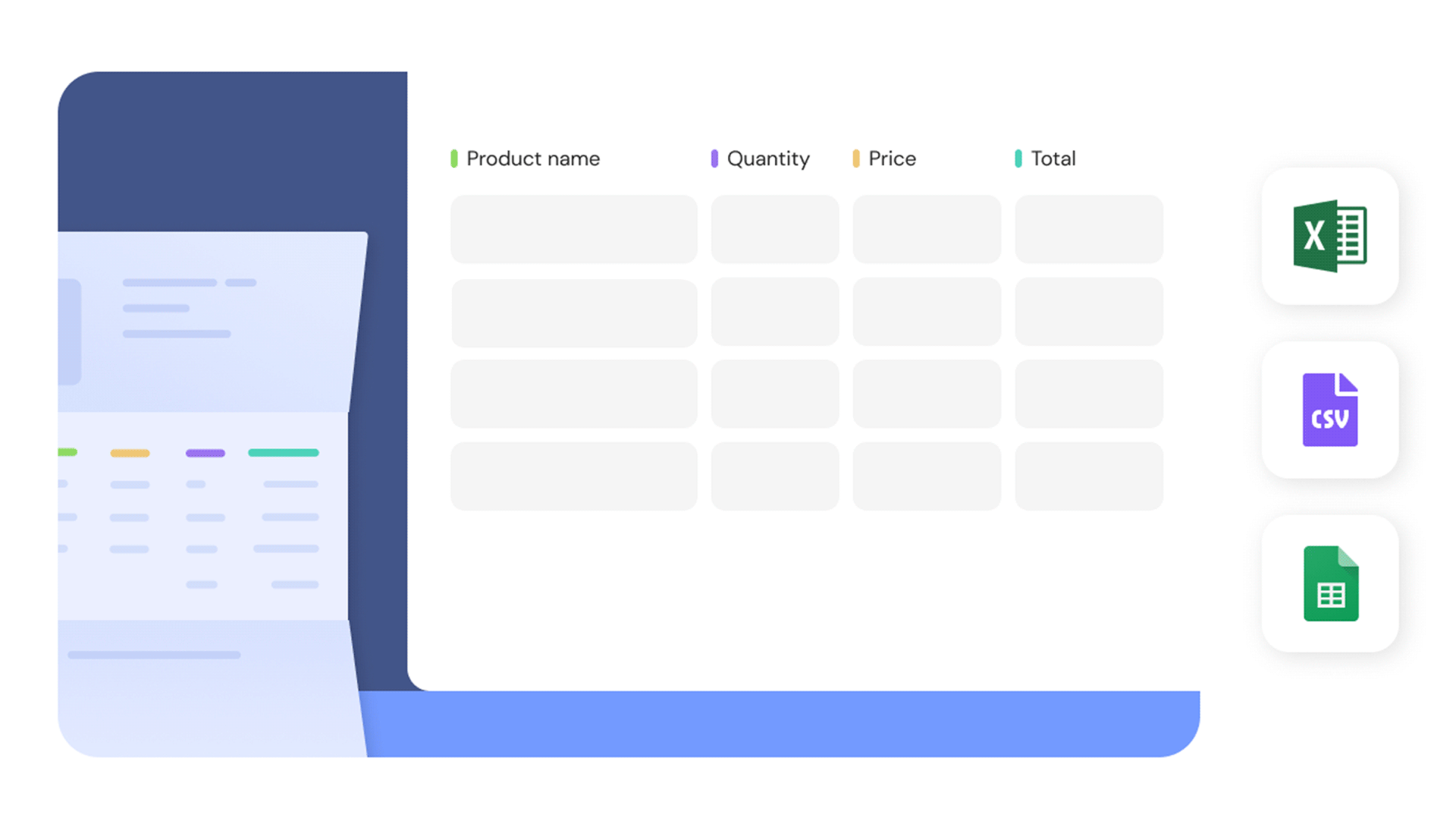How to Extract Data From PDF Documents
The Portable Document Format (PDF) is the go to file format for sharing & exchanging business data. You can view, save and print PDF files with ease.
But editing, scraping/parsing or extracting data from PDF files can be a big pain. For example, have you ever tried to extract text from PDFs, extract tables from PDFs or make a flat PDF searchable?

Challenges in PDF data extraction
Data extraction from PDFs is crucial for reorganizing data according to your own requirements.
In other document formats, such as DOC, XLS or CSV, extracting a portion of information is pretty simple. Just edit the data or copy and paste.
But this is quite challenging to do in the case of PDFs.
Editing is impossible and copy-pasting just doesn’t maintain the original formatting & order - try extracting tables from a PDF!
When handling PDF data extraction in bulk, these issues can cause errors, delays or cost overruns that could seriously impact your bottomline!
Fortunately, there are solutions like Nanonets, that can extract data from PDF documents efficiently.
Let's look at the 6 most popular ways in which businesses extract data from PDFs.
6 ways to extract data from PDFs
Here are 6 different ways to extract data from PDF in an increasing order of efficiency and accuracy:
- Copy and paste
- Outsourcing manual data entry
- PDF converters
- PDF table extraction tools
- PDF data scrapers
- Automated PDF data extraction solutions that use AI to extract data from PDF
Need a smart solution for image to text, PDF to table, PDF to text, or PDF page extraction? Check out Nanonets' pre-trained data extraction AI for bank statements, invoices, customer orders, Purchase Orders, receipts, passports, driver's licenses & or any tabular data!

Copy and paste

A copy-and-paste approach is the most practical option when dealing with a small number of simple PDF documents.
- Open each PDF file
- Select a portion of data or text on a particular page or set of pages
- Copy the selected information
- Paste the copied information on a DOC, XLS or CSV file
Outsourcing manual data entry

Handling manual data extraction from PDFs in-house for a large number of documents might become unsustainable and prohibitively expensive in the long run.
Outsourcing manual data entry is an obvious alternative that is both cheap and quick.
Online services like Upwork, Freelancer, Hubstaff Talent, Fiverr, and other similar companies have an army of data entry professionals based out of middle-income countries in South Asia, South-East Asia, and Africa.

Want to capture data from PDF documents or convert PDF to Excel? Check out Nanonets' PDF scraper or PDF parser to scrape PDF data or parse PDFs at scale!

PDF converters
PDF converters are an obvious choice for those concerned about data quality & data security.
PDF converters allow data extraction to be managed in-house while being fast and efficient. PDF converters are available as software, web-based online solutions and even mobile apps.
PDFs are most commonly converted to Excel (XLS or XLSX) or converted to CSV formats as they present tables in a neat way; PDF to XML converters are also popular.
Simply upload the PDF document and convert it into a format of your choice.
Here are some top PDF convertor tools/software:
- Adobe
- Simply PDF
- SmallPDF
- PDF2Go
- PDFtoExcel
- PDF bank statement to Excel
- PDFelement
- Nitro Pro
- Cometdocs
- iSkysoft PDF Converter Pro
PDF data extractor or PDF table extraction tools

Very often, PDF documents contain tables along with text, images and figures. In many cases, the data of interest usually lies in the tables.
PDF converters process the entire PDF document, without providing an option to limit the data extraction to a specific section in a PDF (such as specific cells, rows, columns or even tables).
PDF to table extraction tools or PDF data extractors do just that.
PDF table extraction tools/technologies such as Tabula & Excalibur allow you to select sections within a PDF by drawing a box around a table and then extracting the data into an Excel file (XLS or XLSX) or CSV.
If your PDFs deal with invoices, customer orders, receipts, claim forms, passports, or driver's licenses, check out Nanonets' PDF scraper or PDF data extractor to capture data from PDF documents.

PDF data scrapers
PDF scrapers offer an efficient, powerful and scalable way to extract large amounts of data stored in PDFs and convert them into machine readable structured data. Data scraped from PDFs can be conveniently processed in automated workflows
PDF scrapers are solutions that use OCR engines under the hood to scrape data from PDF documents. They are quite accurate and can provide considerable automated data extraction capabilities.
Automated PDF data extraction solutions that use AI to extract data from PDF
Automated solutions that leverage AI to extract data from complex PDFs provide the most holistic solution to the problem of extracting data from PDFs.
Such intelligent document processing solutions leverage OCR software that is further enhanced by artificial intelligence and machine learning (among other techniques) to achieve high levels of accuracy while automating PDF data extraction workflows end to end.
Some of the most popular PDF data extractor AIs include Nanonets, Google Document AI, AWS Textract, and many other AI-powered OCR software. They are dependable, efficient, extremely fast, competitively priced, secure & scalable. They can also handle scanned documents as well as native PDF files and are not bound by any templates or fixed document formats.
AI-powered PDF data extraction solutions can easily handle document processing workflows from common/complex business documents like invoices, POs, receipts, bank statements, IDs and even handwritten business forms.
How Nanonets AI can automate your PDF document data extraction workflows
Nanonets AI goes a step further than most AI PDF data extraction solutions by allowing users to use natural language to describe the data that they want to extract from a document. With Nanonets, start extracting structured data from documents right from the get-go, without any training.
Just define/describe your data fields of interest, upload any document, and Nanonets extracts the data you require. Check out the Nanonets API documentation for more details.
Here’s a demo of Nanonets in action:
Nanonets Zero Training Document AI
With Nanonets, you can:
- Automate your document processing workflows/processes
- Reduce manual data entry time and costs by upto 80%
- Extract relevant data from any document type automatically
Nanonets is a perfect fit for you if you have a:
- Customer facing or internal app that requires users to upload any documents on the app and auto populate the data in the app instead of users having to manually enter it.
- A process that requires your staff to review certain documents and manually enter the data in these documents.
Some of the most common use-cases for Nanonets are:
- Accounts payable automation
- Expense reimbursement automation
- Salesforce sales order processing
- KYC process
- Resume screening
- Insurance details reconciliation
- Loan application processing
Nanonets has many interesting use cases that could optimize your business performance, save costs, and boost growth. Find out how Nanonets' use cases can apply to your product.
Update April 2024: this post was originally published in Oct 2020 and has since been updated numerous times.






















































